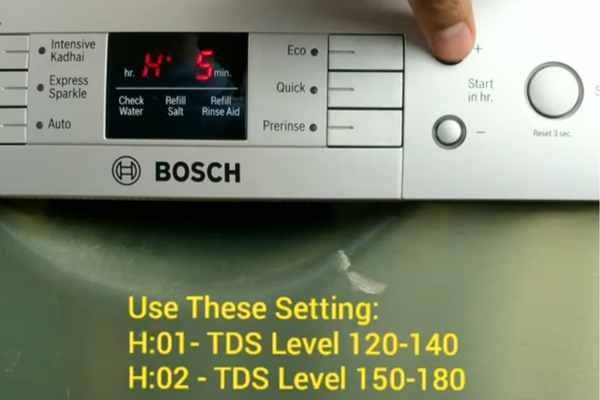
This particular error code, F2, often indicates problems with the water level in the dishwasher. It’s a fancy way of saying the dishwasher might be struggling with its water intake or drainage. But here’s the kicker: one of the simplest potential solutions involves something you can do without even opening a toolbox – a quick reset. But does this really solve the problem, or is it like putting a band-aid on a more significant issue? Let’s dive in and find out.
Understanding the Root of Error Code F2
Before we jump into solutions, it’s crucial to understand what Error Code F2 is trying to tell you. A Frigidaire dishwasher displays this code when there’s a problem with the water level. Think of it like this: Just as a chef in the kitchen needs a precise amount of ingredients to make a dish perfect, your dishwasher requires the right amount of water to clean your dishes effectively. If there’s too much or too little water, the dishwasher simply cannot perform its job properly.
Moreover, the causes of this issue can vary. It could be due to a clogged drain, an issue with the water inlet valve, or even a malfunctioning float switch. Sometimes, tiny pieces of food or other debris can block the drainage system, leading to this error. Alternatively, a failing water inlet valve is like a faucet that doesn’t open fully, preventing the right amount of water from flowing into the system.
But here’s the deal: you don’t need to know the ins and outs of each component to start troubleshooting. Understanding the basics can empower you to make informed decisions about whether professional repair is necessary or if a simple reset will do the trick.
How to Reset Your Frigidaire Dishwasher
Now, onto the good stuff – resetting your dishwasher. You might be wondering why a reset could solve the issue. Think of it as giving your dishwasher a quick nap to clear its ‘head’ or memory. Sometimes, a glitch in the system can cause the error code to appear inaccurately, and a reset clears those glitches.
To reset a Frigidaire dishwasher, start by pressing and holding the “Cancel” button for about three seconds. This action should cancel the current cycle and clear any errors displayed. Once this is done, disconnect the power supply by unplugging the dishwasher or turning off the circuit breaker for a few minutes. This step is crucial as it helps to reset the dishwasher’s electronic controls.
After a few minutes, restore the power supply and select a new wash cycle to see if the error code has vanished. If your dishwasher runs without a hitch, it’s likely that the error was a temporary software glitch. If not, it might be time to dig deeper or consult a professional.
When Resetting Doesn’t Cut It
So, what if the error code pops up again despite a reset? It’s like hitting the ‘snooze’ button on an alarm – the issue persists, and a more in-depth approach is needed. Potential causes, like a blocked drain or a non-functional float switch, can require a bit more elbow grease to resolve.
Start by checking the drainage system. Remove any debris from the drain filter and inspect the hose for clogs. If the return flow of water seems inhibited, this might be the root of your problem. A little cleaning might go a long way.
Next, consider the water inlet valve. If it’s not opening correctly, your dishwasher won’t fill up with the correct amount of water. Testing or replacing the valve is a more technical task and might require professional assistance. Remember, while DIY fixes can be satisfying, knowing when to call an expert can save time and prevent further damage.
Prevention Tips for Smooth Dishwasher Operation
To keep your dishwasher running smoothly and avoid future headaches, regular maintenance is key. Much like brushing your teeth prevents cavities, routine care can prevent many common problems associated with dishwashers.
Rinse your dishes before loading them to minimize food residue build-up, which can clog the drains. Regularly clean the dishwasher’s filter and keep the spray arms free of debris for optimal performance. Additionally, routinely inspecting and cleaning the seals and gaskets can help prevent leaks, which might lead to different error codes.
Lastly, run a maintenance wash with a dishwasher cleaner every month. It’s like going for a monthly facial – it keeps everything fresh and in good working order. By taking these preventative steps, you can extend the life of your dishwasher and minimize the risk of encountering Error Code F2 in the future.
In the world of dishwashers, a little knowledge goes a long way. Armed with the understanding of Error Code F2, you’re better prepared to tackle minor issues and maintain a harmonious kitchen.